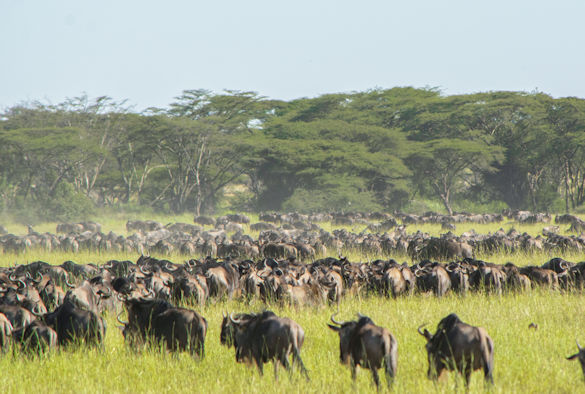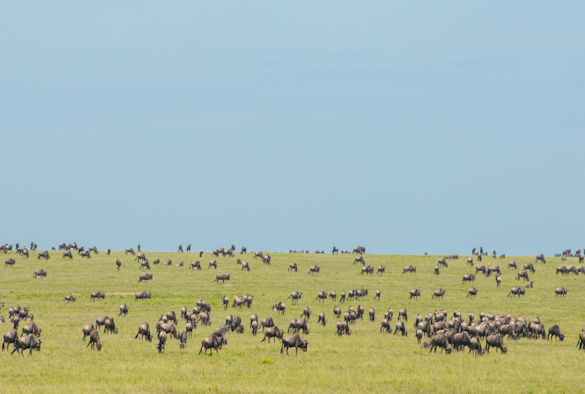The Serengeti-Mara squeeze – one of the world’s most iconic ecosystems under pressure
Published on

Increased human activity around one of Africa’s most iconic ecosystems is “squeezing the wildlife in its core”, damaging habitation and disrupting the migration routes of wildebeest, zebra and gazelle, an international study involving the University of Liverpool has concluded.
The Serengeti-Mara ecosystem is one of the largest and most protected ecosystems on Earth, spanning 40,000 square kilometres and taking in the Serengeti National Park and Maasai Mara National Reserve in East Africa.
Every year a million wildebeest, half a million gazelle and 200,000 zebra make the perilous trek from the Serengeti national park in Tanzania to the Maasai Mara reserve in Kenya in their search for water and grazing land.
Now, an international team of scientists have discovered that increased human activity along the boundaries is having a detrimental impact on plants, animals, and soils.
The findings are published in the journal Science.
The study looked at 40 years of data, and revealed that some boundary areas have seen a 400 per cent increase in human population over the past decade, while larger wildlife species in key areas in Kenya have declined by more than 75 per cent.
The study reveals how population growth and an influx of livestock in the buffer zones of the parks has squeezed the area available for migration of wildebeest, zebra and gazelles, causing them to spend more time grazing less nutritious grasses than they did in the past. This has reduced the frequency of natural fires, changing the vegetation and altering grazing opportunities for other wildlife in the core areas.
The team shows that the impacts are cascading down the food chain, favouring less palatable plants and altering the beneficial interactions between plants and microorganisms that enable the ecosystem to capture and utilize essential nutrients.
The effects could potentially make the ecosystem less resilient to future shocks such as drought or further climate change, the scientists warn.
The authors conclude that, even for reasonably well-protected areas like the Serengeti and Mara, alternative strategies may be needed that sustain the coexistence and livelihood of local people and wildlife in the landscapes surrounding protected areas. The current strategy of increasingly hard boundaries may be a major risk to both people and wildlife.

The study was led by the University of Groningen with collaborators at 11 institutions around the world, including the universities of Liverpool, York and Glasgow from the UK.
Dr Michiel Veldhuis, lead author of the study from the University of Groningen, said: “There is an urgent need to rethink how we manage the boundaries of protected areas to be able to conserve biodiversity. The future of the world’s most iconic protected area and their associated human population may depend on it.”
Liverpool ecologist, Professor Kate Parr, said: “Our results show that we cannot rely on the sheer extent of protected areas to conserve biodiversity - human impacts are pervasive and threaten even our most iconic reserves.”
Dr James Probert who recently completed his PhD at the University of Liverpool’s School of Environmental Sciences, said: "The Serengeti-Mara is one of the largest trans-boundary protected area complexes in the world, and yet we find the negative impacts of human activities impacting its core. It is clear that even large protected areas, with strict restrictions on what human activities can take place, can be indirectly affected by human populations at their boundaries.”
Dr. Simon Mduma, Director of the Tanzanian Government’s Wildlife Research Institute, added: “These results come at the right time, as the Tanzanian government is now taking important steps to address these protected areas boundary issues on a national level.”